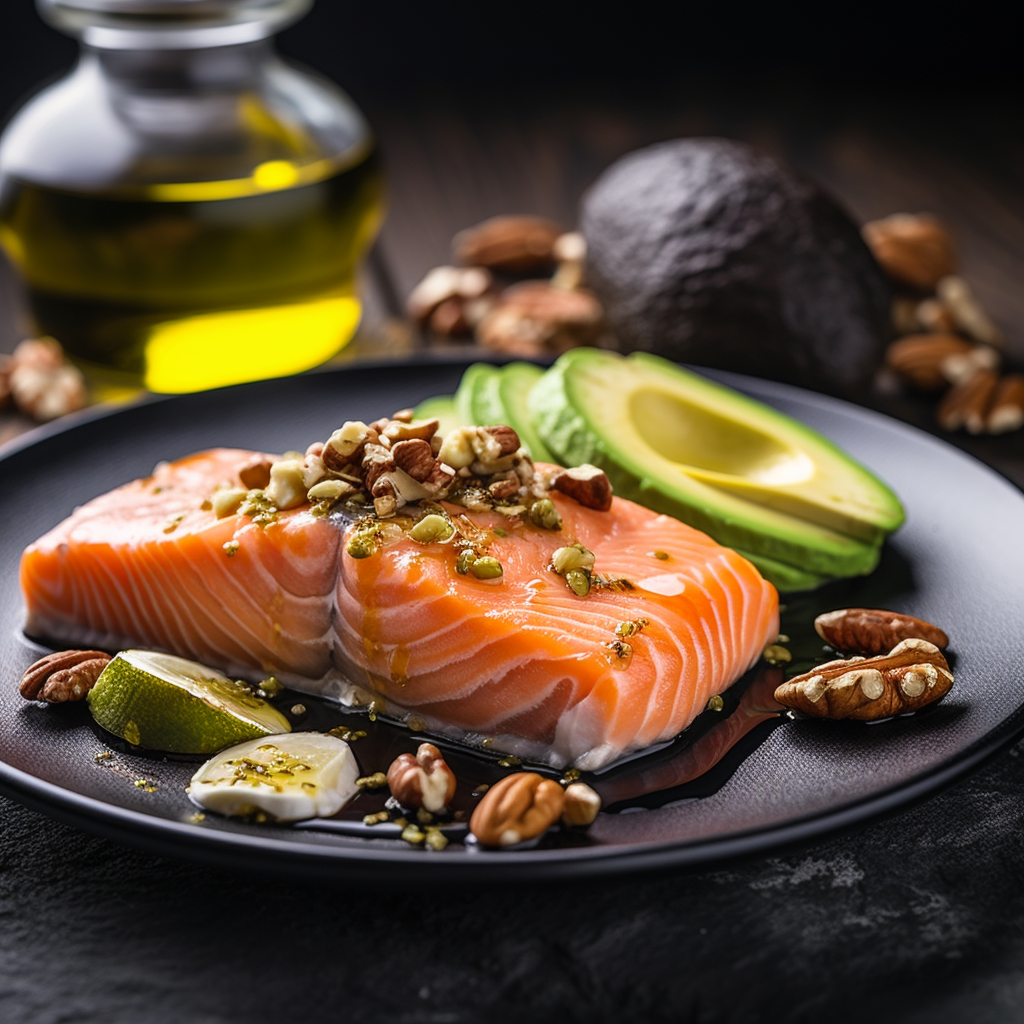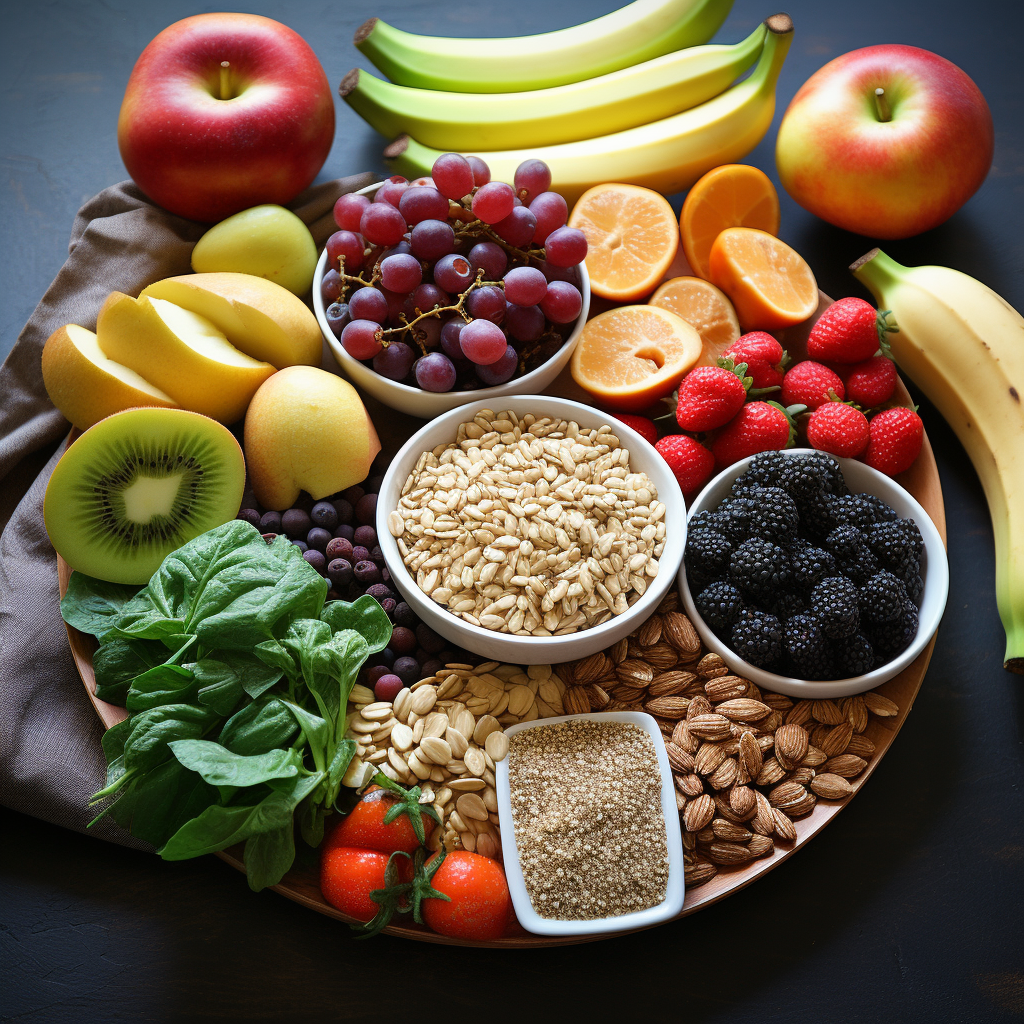Macros vs Micros
Macronutrients, or “macros” for short, are the nutrients our bodies need in larger amounts for energy and growth. These include carbohydrates, proteins, and fats.
Micronutrients are essential nutrients that your body needs in smaller amounts to function properly. They’re things like vitamins and minerals.
How do I Track Macros?
Use an app like LoseIt or MyFitnessPal.
How do I know how much of each to eat?
Use a website like iifym.com.
A Deeper Dive into Macros
Carbohydrates are the body’s primary energy source, fueling everything from your morning jog to your afternoon brainstorming session (or food coma). They should typically make up about 45-65% of your daily caloric intake.
Proteins, on the other hand, are the body’s building blocks. They’re essential for muscle repair, immune function, and the creation of enzymes and hormones. Aim to get around 10-35% of your daily calories from protein.
Fats, though often vilified, are actually crucial for body processes like vitamin absorption and hormone production. Healthy fats should make up about 20-35% of your total caloric intake.
| Macro | ~% of total caloric intake |
| Carbs | 45-65% |
| Proteins | 10-35% |
| Fats | 20-35% |
Tracking your macronutrients can help ensure you’re giving your body the right kinds of fuel in the right quantities.
Intuitively, you already know what’s a good protein vs bad protein. A good carb vs a bad carb. And good fat versus a bad fat. But still, let’s talk in detail more about each:
Protein
Protein is essential for building and repairing tissues in your body, including your hair and skin.

Good protein for glowing up is lean protein. Make sure to include sources of lean protein such as chicken, fish, beans, and tofu in your meals.
Not all protein is good protein
While meat is a great source of protein, consuming too much fatty meat can pose significant health risks. Saturated fats found predominantly in fatty cuts of meat and processed meats can contribute to high cholesterol levels, which may increase the risk of heart disease.
Additionally, overconsumption of red and processed meats has been linked to an increased risk of type 2 diabetes and certain types of cancer, such as colon cancer.
Also, fatty meats are typically high in calories, which, if not balanced with physical activity, can lead to weight gain and obesity.
| Good | In moderation | Avoid |
| Fish Poultry Beans Legumes | Red meat Cheese | Bacon Cold cuts Processed meats |
Fats
Healthy fats are important for maintaining healthy skin and hair. Include foods like avocado, nuts, and olive oil in your diet.

Unhealthy fats like trans fats, which are found in some commercially-prepared foods and processed oils, should be avoided as they can increase the risk of heart disease.
| Good | In moderation | Avoid |
| Olive oil Avocado Nuts Fatty fish like salmon | Red meat Whole milk Cheese Coconut oil | Bacon Butter Chicken skin Fried foods |
Carbs
Good carbs, such as whole grains and fruits, provide your body with energy to stay active and help maintain a healthy weight.

Simple carbohydrates such as those found in candy, soda, and other processed snacks are quickly absorbed and can contribute to weight gain.
We know cutting out sugar cold turkey is nearly impossible for many, so do your best to limit your intake and try to get there.
To bridge your cravings, consider a piece of fresh or dried fruit in place of that next cookie or fourth snack size snickers bar.
| Good | Avoid |
| Whole grains Fruits Veggies | Refined sugar (ex. Cookies, soda) Refined starch White bread |
Let’s talk Micronutrients
Unlike macronutrients (carbohydrates, fats, and proteins), which are required in larger quantities for energy and structural functions, micronutrients are required in minute amounts, hence the name “micro.” They play a crucial role in numerous bodily functions, including growth, disease prevention, and well-being.
They consist of vitamins and minerals.
Vitamins
These are organic compounds that are crucial for various metabolic processes. Vitamins can be water-soluble (like Vitamin C and B vitamins) or fat-soluble (like Vitamins A, D, E, and K). Each vitamin has specific roles, such as aiding in energy production, maintaining skin health, supporting the immune system, and aiding in blood clotting.
Minerals
These are inorganic elements that the body needs for various functions. Major minerals (like calcium, potassium, and magnesium) are required in larger amounts, while trace minerals (like iron, zinc, copper, and iodine) are needed in smaller quantities. Minerals are vital for bone health, muscle function, nerve signaling, and maintaining a healthy blood pressure.
Where to get Micronutrients
Fruits & Vegetables
Fresh fruits and vegetables offer essential vitamins and minerals that are beneficial for overall health. Fruits and veggies also contain fiber that helps promote healthy digestion and satiety. Aim to consume a variety of colors throughout the week to get a wide range of nutrients.
Whole Grains
Whole grains provide complex carbohydrates, proteins, vitamins, minerals, antioxidants, fiber, and other beneficial plant compounds. Consuming whole grains regularly can help reduce cholesterol levels, maintain a healthy weight, reduce blood pressure levels, and support digestive health.
